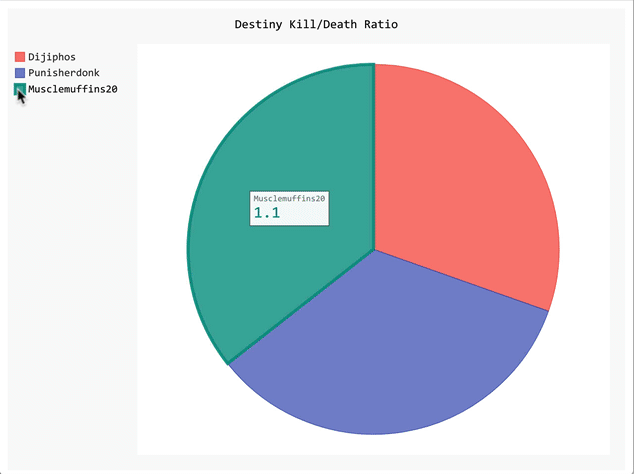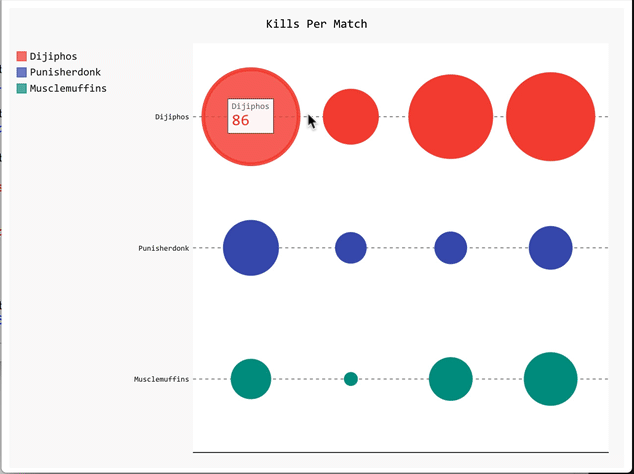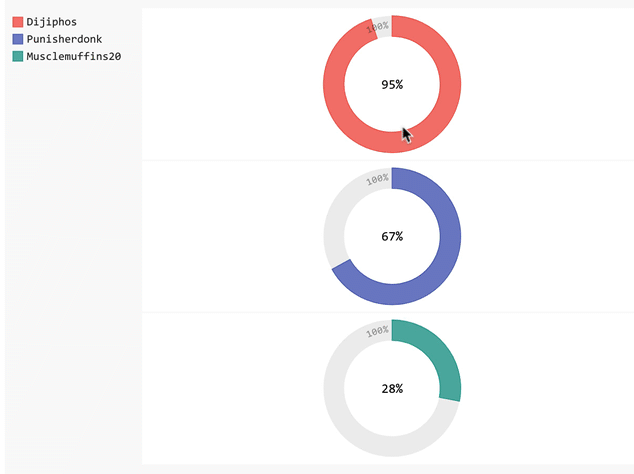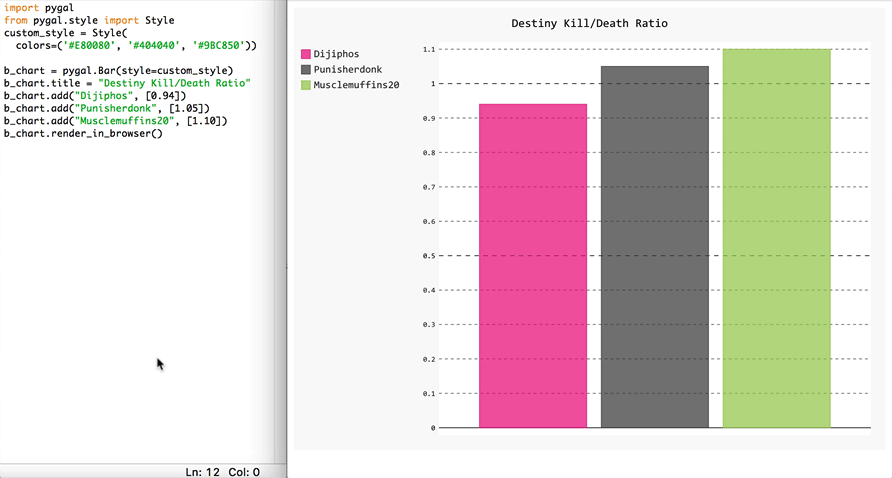Creating Interactive Charts with Python Pygal
Want to create interactive Python charts? With Pygal, you can create interactive line charts, bar graphs, and radar charts with very little code. Start creating today!
Jan 10, 2019 • 6 Minute Read
Introduction to Pygal
When it comes to interactive charts and the modules you can use, you may be familiar with Matplotlib, Seaborn, and Bokeh, which each allow interactivity and support additional features.
However, Pygal specializes in allowing the user to create SVGs. Besides the scalability of an SVG, you can edit them in any editor and print them in very high quality resolution. SVG formatting is easily integrated with Flask and Django as well. Lastly, you can easily and minimally create line charts, bar graphs, and Radar Charts (to name a few) with very little code, as we'll see shortly with the following examples:
Installation
Open Terminal
$ pip install Pygal
Extra Help: Installing and Dependencies - Link
Using Pygal
Step 1: Import
import pygal
Step 2: Create a Variable to Store the Graph
For our first example we'll create a bar chart. We'll simply need to create a variable and store pygal.Bar() inside.
import pygal
b_chart = pygal.Bar()
You can easily use pygal.Line, pygal.pie, or any of the following.
Step 3: Add Some Values
Next we need to start creating our chart. I will be using Data that I scraped from a gaming tracker for the game Destiny 2. Eventually the graph will be live and I'll be able to see my stats change (hopefully) in real time.
Let's not get ahead of ourselves.
In short, everytime I play in a PvP or Crusible Match and eliminate an opponent or end up getting eliminated myself, the KD (Kill/Death Ratio) will change. I simply want to compare myself to my clan mates.
Thus, to start things off, we'll need a chart title.
import pygal
b_chart = pygal.Bar()
b_chart.title = "Destiny Kill/Death Ratio"
Now we can start adding in our data. I need 3 bars, one for each player. To accomplish this, I'll need to use add followed by a title and some values.
import pygal
b_chart = pygal.Bar()
b_chart.title = "Destiny Kill/Death Ratio"
b_chart.add("Dijiphos", [0.94])
b_chart.add("Punisherdonk", [1.05])
b_chart.add("Musclemuffins20", [1.10])
Technically, we can finish and render without further customization. To render quickly to a browser, we'll use render_in_browser() as our output.
import pygal
b_chart = pygal.Bar()
b_chart.title = "Destiny Kill/Death Ratio"
b_chart.add("Dijiphos", [0.94])
b_chart.add("Punisherdonk", [1.05])
b_chart.add("Musclemuffins20", [1.10])
b_chart.render_in_browser()
Customizing the Graph
This is easy to do, and can actually be achieved in multiple ways. First, import style from pygal.style.
import pygal
from pygal.style import Style
b_chart = pygal.Bar()
b_chart.title = "Destiny Kill/Death Ratio"
b_chart.add("Dijiphos", [0.94])
b_chart.add("Punisherdonk", [1.05])
b_chart.add("Musclemuffins20", [1.10])
b_chart.render_in_browser()
You can change a number of objects by simply adding:
import pygal
from pygal.style import Style
custom_style = Style(
b_chart = pygal.Bar()
b_chart.title = "Destiny Kill/Death Ratio"
b_chart.add("Dijiphos", [0.94])
b_chart.add("Punisherdonk", [1.05])
b_chart.add("Musclemuffins20", [1.10])
b_chart.render_in_browser()
Notice I left the parentheses open.
Properties & Description
plot_backgroundThe color of the chart area background backgroundThe color of the image background foreground|The main foregrond color colorsThe serie color list value_colorsThe print_values color list Complete List: https://www.pygal.org/en/stable/documentation/custom_styles.html
Let's change the color of our bars by using the object colors.Don't forget to indent and close our final parentheses.
import pygal
from pygal.style import Style
custom_style = Style(
colors=('#E80080', '#404040', '#9BC850'))
b_chart = pygal.Bar()
b_chart.title = "Destiny Kill/Death Ratio"
b_chart.add("Dijiphos", [0.94])
b_chart.add("Punisherdonk", [1.05])
b_chart.add("Musclemuffins20", [1.10])
b_chart.render_in_browser()
Now, all we need to do is pass style=custom_style in our pygal.Bar() to get it to work.
import pygal
from pygal.style import Style
custom_style = Style(
colors=('#E80080', '#404040', '#9BC850'))
b_chart = pygal.Bar(style=custom_style)
b_chart.title = "Destiny Kill/Death Ratio"
b_chart.add("Dijiphos", [0.94])
b_chart.add("Punisherdonk", [1.05])
b_chart.add("Musclemuffins20", [1.10])
b_chart.render_in_browser()
That's a Wrap
Advance your tech skills today
Access courses on AI, cloud, data, security, and more—all led by industry experts.








